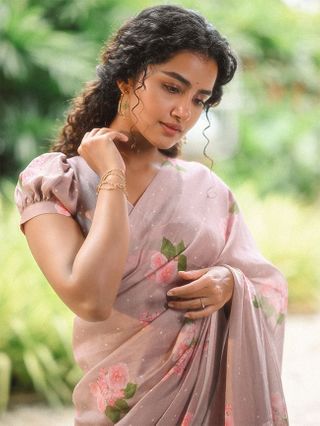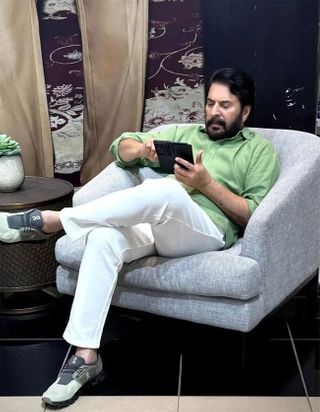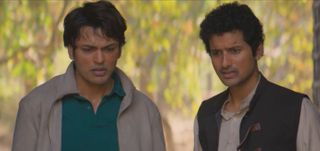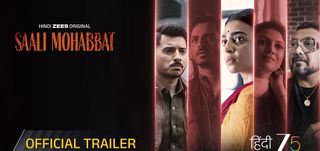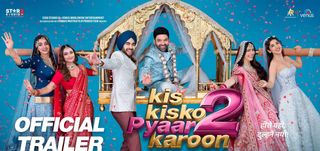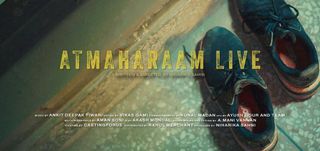Saawariya Movie Review
This work of art doesn't have the in-your-face flamboyance of "Devdas" or "Black" where almost every shot reached a crescendo, every passion peaked like a mid-summer sun, and every movement denoted drama. But "Saawariya" is Sanjay Leela Bhansali's most tender ode to love yet.
Taking Fyodor Dostoevsky's minuscule play "White Nights", Bhansali has built huge but unimposing emotions classified by dollops of awe-inspiring studio-erected architecture that represents feelings rather than physical forms.
This is the director's most subtle and mellow creation.
Prakash Kapadia's dialogues let Ranbir's character of Ranbir Raj speak in a language that is modern and yet timelessly lovelorn.
The plot, if one may call it that, is a story of unrequited love told in shades of blue. Bhansali's narrative spins its sensuous web around chance encounters in and around a square set in a timeless land where clocks chime to the rhythm of a besotted heart and neon signs straight out of a bright Broadway pay cheeky homage to Bollywood's past, including Raj Kapoor, of course.
Ranbir Raj sings and performs at a club called Raj's Bar when he isn't chasing the enigmatic Sakina (Sonam Kapoor) across an arched bridge that symbolises the end of hope and the beginning of love.
Sakina, if you must know, is on an eternal wait. A stranger (Salman Khan) walked into her home and life, walked out and promised to return. The lacuna between longing and fulfilment is filled by a young man who dances, sings, makes faces, writes love letters, protects Sakina from the rain, but alas, cannot protect himself from the heartbreak that awaits him under the bridge.
You can see reflections of Raj Kapoor's persona from "Sri 420" and "Chhalia" in Ranbir's acting in "Saawariya". And his relationship with his outwardly harsh landlady -- played by the gloriously spirited Zohra Sehgal -- is a wonderful recreation of the bond between Raj Kapoor and Lalita Pawar in "Anari".
Ranbir's acting is a dangerously extravagant and bravura performance that could've toppled over under the weight of the character's inherent exhibitionism. But with his director's help, Ranbir succeeds.
The emotions that run across the gossamer frames of this fragilely structured play-on-celluloid are woven with the delicacy that one associates with Kashmiri carpets.
Ironically, though requiring more attention than all his earlier works, "Saawariya" is Bhansali's simplest story to date. The age-old boy-meets-girl format has been taken to the plane of purest expressionism.
The enchanting encounters shown in the film furnish the slim but haunting plot with the feeling of a play where the characters forget they are on stage.
The film's consciously created staginess is its biggest virtue. It lends an otherworldly quality to the frames. The wispy characters may or may not exist outside the prostitute-narrator Rani Mukerji's playful mind.
Maybe she's making up this beautiful tale of one-sided love and perhaps the boy-man she took under her wings is just a figment of her imagination.
The disarming delicacy with which art directors Omang and Vinita Kumar and cinematographer Ravi Chandran have built the blue foundations of the film's ravishingly romantic imagination lifts Dostoevsky's play to the sphere of poetry.
Monty Sharma's soul-stirring music adds an entirely new dimension to the story of waiting and suffering.
As expected from a Bhansali creation, the film is bathed in visuals that overpower the senses. The sequence where Sonam runs across a gauntlet of perpendicularly hung carpets beating a dust storm out of their beautiful fabric is a moment of sensual eruption.
In "Saawariya", Sonam does not know what or whom she is running from or what she will run into. She is Nutan in "Bandini", Aishwarya in "Hum Dil De Chuke Sanam" and Waheeda Rehman in "Pyasa".
"Saawariya" is like a dream where the characters themselves live in a dream world. Escape from this world is ak
OTHER REVIEWS







